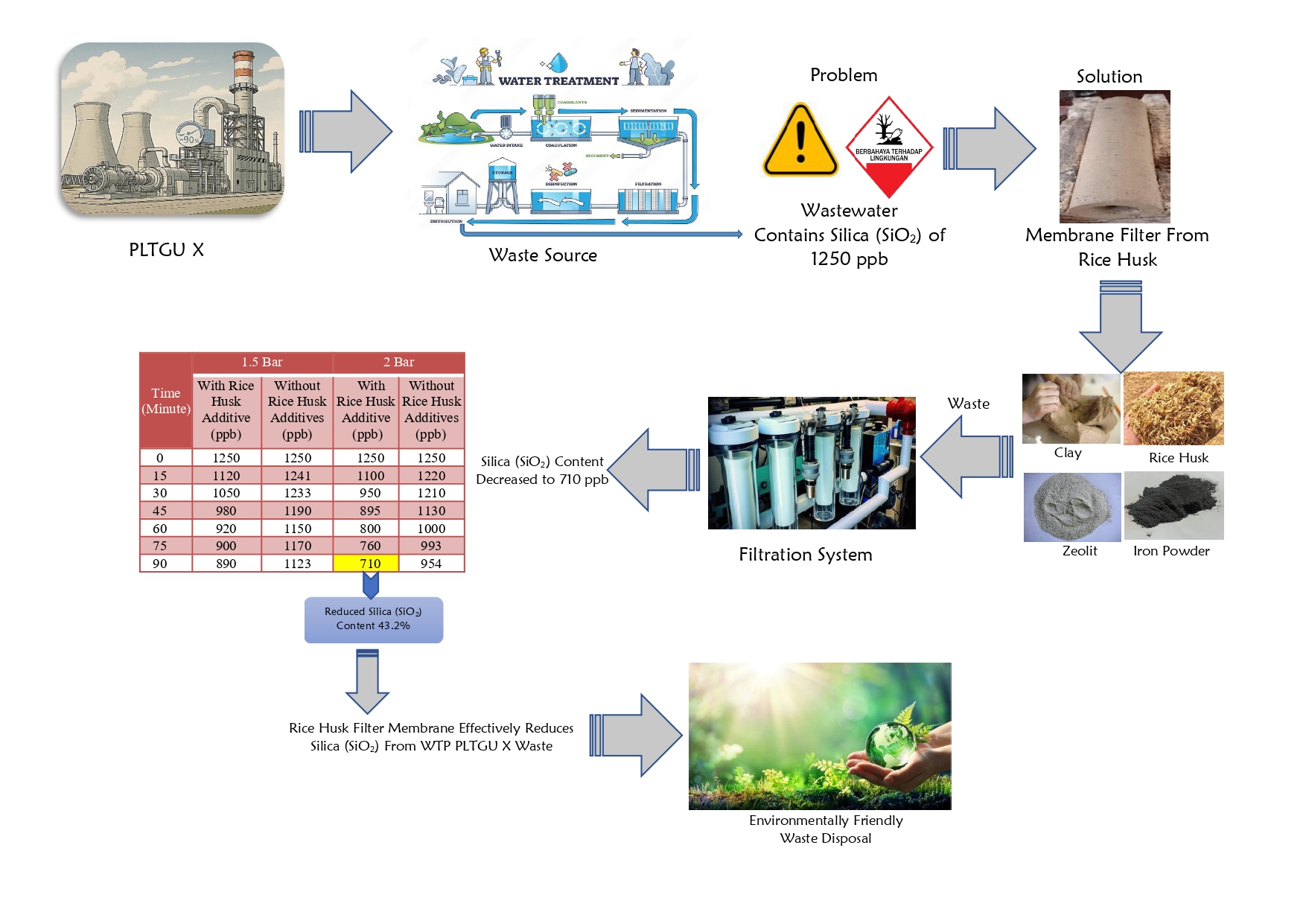Analysis of Pyrolytic Product Distribution for B3 and Non-B3 Medical Waste Pyrolysis

Downloads
The coronavirus disease (COVID-19) has badly impacted many sectors, particularly medical waste generation in healthcare facilities. The increasing amount of medical waste poses a serious threat to health and environmental sustainability. Traditional waste processing (burning) cannot be used for B3 medical waste and is often mixed with non-B3 medical waste. This is because it potentially generates dangerous chemicals emitted into the atmosphere. Meanwhile, pyrolysis as a superior thermochemical technology is an effective solution for treating both B3 medical waste and non-B3 medical waste. The waste used in this study has good characteristics, as indicated by the low water and high fixed carbon content. The pyrolysis process yields products with economic value, such as solid, liquid, and gas products. Therefore, this study aims to determine the levels of products that can be produced from B3 and non-B3 medical waste. The results showed that rubber bands produce the highest proportion of liquid products at 44%, the highest solid products were obtained from LDPE plastic waste with a proportion of 65%, while the highest gas product was produced by mask waste at 45%. Based on the results, waste with high product yields can be used as an alternative energy source, such as gasoline, LPG, briquettes, and battery-based materials.
Downloads
Aini, N., Jamilatun, S., & Pitoyo, J. (2022). Pengaruh tipe biomasa pada produk pirolisis: a review. Agroindustrial Technology journal, 06(01), 89-101. DOI: 10.21111/atj.v6i1.7559
Ali, S. A., Parvin, F., Al-Ansari, N., Pham, Q. B., Ahmad, A., Raj, M. S., ... Thai, V. N. (2021). Sanitary landfill site selection by integrating AHP and FTOPSIS with GIS: a case study of memari municipality, India. Environmental Science and Pollution Research, 28, 7528-7550. doi: 10.1007/s11356-020-11004-7
Amrullah, A., Ristianingsih, Y., Mursadin, A., & Abdi, C. (2015). Studi eksperimental bio oil berbahan baku limbah sisa makanan dengan variasi temperatur pirolisis. Proceeding Seminar Nasional Tahunan Teknik Mesin XIV, (Snttm Xiv), 7-14.
Aragaw, T. A., & Mekonnen, B. A. (2021). Current plastics pollution threats due to COVID-19 and its possible mitigation techniques: a waste-to-energy conversion via Pyrolysis. Environmental Systems Research, 10, 1-11. DOI: 10.1186/s40068-020-00217-x
Awad, M., Moustafa-farag, M., Wei, L., Huang, Q., & Liu, Z. (2020). Effect of garden waste biochar on the bioavailability of heavy metals and growth of brassica juncea ( L .) in a multi-contaminated soil. Arabian Journal of Geosciences, 13, 1-12. DOI: 10.1007/s12517-020-05376-w
Copyright (c) 2022 CHEESA: Chemical Engineering Research Articles

This work is licensed under a Creative Commons Attribution-NonCommercial-ShareAlike 4.0 International License.
With the receipt of the article by CHEESA Editorial Board and the decision to be published, the copyright regarding the article will be transferred to CHEESA Journal.
CHEESA has the right to multiply and distribute the article and every author is not allowed to publish the same article that was published in this journal.

This work is licensed under a Creative Commons Attribution-NonCommercial-ShareAlike 4.0 International License.
Under the following terms:
Attribution ” You must give appropriate credit, provide a link to the license, and indicate if changes were made. You may do so in any reasonable manner, but not in any way that suggests the licensor endorses you or your use.
NonCommercial ” You may not use the material for commercial purposes.
ShareAlike ” If you remix, transform, or build upon the material, you must distribute your contributions under the same license as the original.







